Hercules and Leo—the NhRP’s clients since 2013—are perhaps the most famous chimpanzees in the United States, being the first nonhuman animals in history to be granted a habeas corpus hearing to determine the lawfulness of their detention. Though that court did not free Hercules and Leo from captivity or recognize their rights—believing itself bound by the ruling of an appellate court—in ordering such a hearing, it treated Hercules and Leo just as it would have treated human beings. Here is a window into Hercules and Leo’s existence as research subjects at Stony Brook University:
On March 21, 2018, NhRP clients Hercules and Leo finally found freedom and sanctuary. On that long awaited spring day, Hercules, Leo and their social group arrived at Project Chimps, a sanctuary located in Blue Ridge, Georgia. Finally free from the New Iberia Research Center (their “owner”) and a basement lab at Stony Brook University, the chimpanzees began their new life at a refuge where their autonomy would be respected for the first time since they were born twelve years ago.
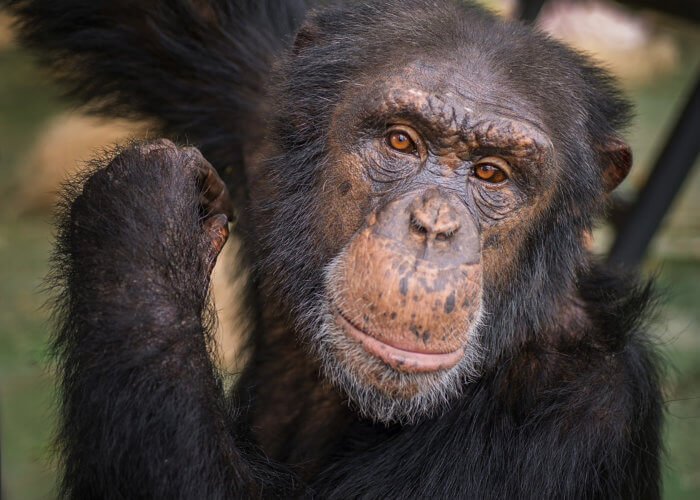
In late September 2018, NhRP Executive Director Kevin Schneider and I traveled to Project Chimps to tour the sanctuary and learn more about Hercules and Leo’s daily lives. As we arrived at the sanctuary, nestled in the Blue Ridge mountains, we were taken by how lush and tranquil the grounds were. The forested environment seemed like the perfect place for former research chimpanzees to recover from their trauma and reclaim the freedom that was taken from them.

Our tour began with an overview of the current structures at the sanctuary. The property had previously been used to house gorillas, and the current chimpanzee habitat is largely made up of what had been put in place by the past owners. The six-acre Peach Tree habitat, where all the current chimpanzee residents live, is comprised of four villas which serve as the residences for the chimpanzees, and a sprawling outdoor area. The villas have an enclosed, temperature-controlled section as well as an outdoor porch which leads to the outdoor habitat. The lush habitat has man-made climbing structures for the chimps as well as countless trees, plants, and shrubs for them to climb and explore.
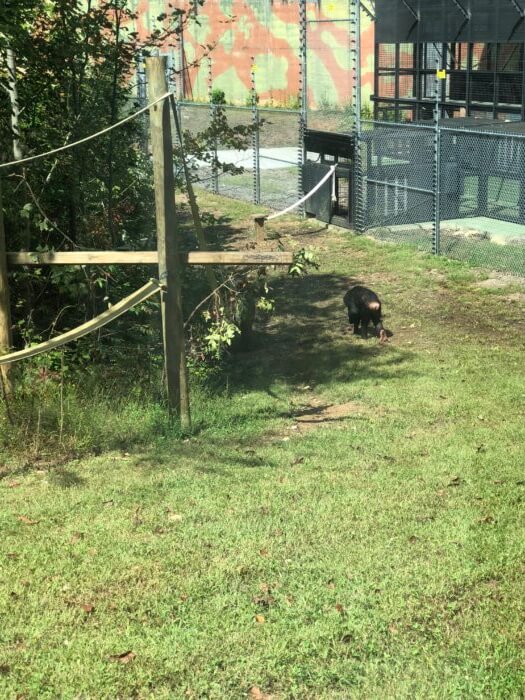
Currently, the outdoor habitat is divided into two three-acre parcels so that two social groups can be outside at the same time. This allows the chimps to safely have outdoor access and familiarize themselves with the other social groups. The goal is for the chimpanzees to be slowly introduced to one another and eventually be a fully integrated troop that can have unfettered access to all of the villas and outdoor habitat.
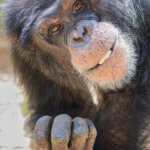
A typical day for Hercules and Leo, and all of the chimpanzees at Project Chimps, begins with them being served juice before breakfast. For breakfast, they are given whole vegetables. After breakfast, they are allowed to go outside if they desire to. Ali Crumpacker, Executive Director of Project Chimps, says that Hercules goes outside whenever he has an opportunity to, while Leo tends to stay inside their villa. This is not uncommon, as all the chimpanzees at the sanctuary had only ever lived indoors and never had access to a natural environment. Staff at the sanctuary will hide food in the outdoor habitat for the chimps to forage. Hercules will often bring his bounty indoors to share with Leo and the other chimps. The chimpanzees who choose to go outside will usually return to the villa by 3 p.m. for a siesta. They are served fruit for dinner and close out the evening with a non-food enrichment activity such as watching a movie or playing with a bubble machine.

After the tour ended, Kevin and I felt overwhelming joy at knowing that Hercules and Leo are being provided exceptional care and living in a way that allows them to be autonomous and exercise their rights. They have the freedom to move about and engage in their natural behaviors, and they are given the space and opportunity to recover from the trauma they were subjected to by the New Iberia Research Center and Stony Brook University. We cannot wait to follow the next part of their journey and see how they flourish at Project Chimps.
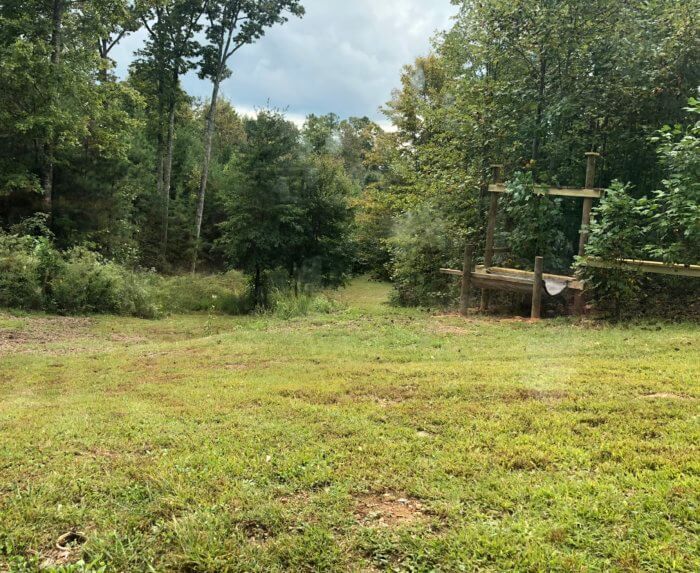
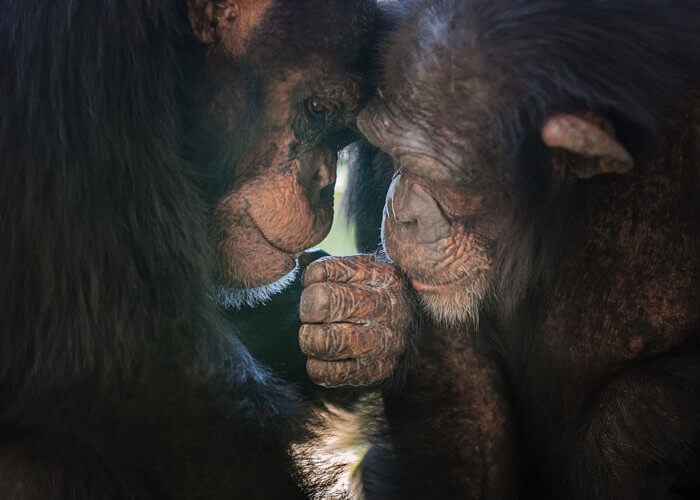
To learn more about Project Chimps, visit their website. Follow Project Chimps on Facebook and Instagram to get regular updates on the chimpanzees at the sanctuary.